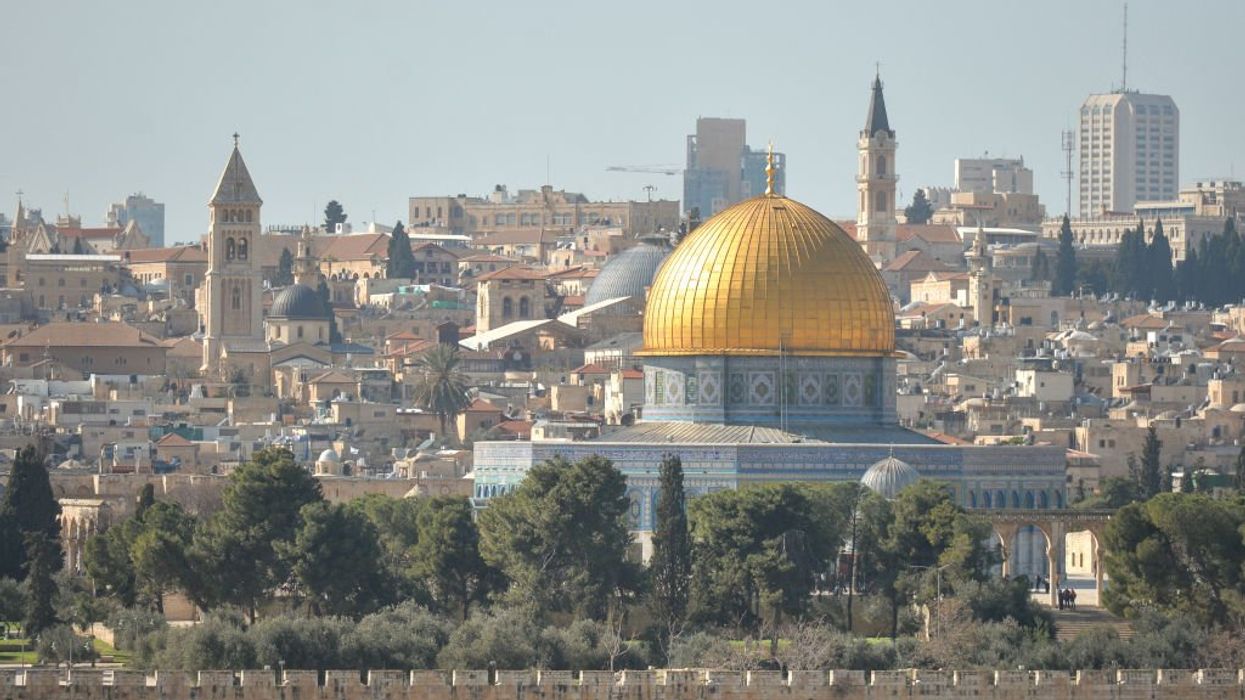
Artur Widak/NurPhoto via Getty Images

The biblical-era fortification demonstrated the 'power of Jerusalem’s rulers to those who entered its gates.'
Archaeologists have uncovered a "monumental" fortification that protected Jerusalem's biblical kings some 3,000 years ago. The "dramatic" archaeological discovery solved a 150-year-old mystery in the City of David.
Since 2007, archaeologists have been excavating the area around the Givati Parking Lot, the largest active archaeological excavation in Jerusalem today. The excavation site on the northwestern side of the City of David has unearthed different layers of the city's life from the Middle Ages to ancient times.
'The creation of the moat was a large-scale, monumental operation, designed ... to demonstrate the power of Jerusalem’s rulers to those who entered its gates.'
The most recent archaeological find is the remnants of a moat that split the City of David in half — separating the king's palace and Temple Mount from the rest of the city, including the Ophel in Jerusalem.
The fortification aligns with the city's division noted in the Bible as Ophel and Millo. In the first Book of Kings (11:27), King Solomon described a fortification known as Millo.
"And this was the cause that he lifted up his hand against the king: Solomon built Millo, and repaired the breaches of the City of David his father," the Bible verse reads.
Archaeologists had been searching for the route of Jerusalem's northern fortification for 150 years. However, the recent excavation finally solved the riddle and revealed a city-dividing moat with unclimbable perpendicular cliffs on both sides.
“It is not known when the moat was first dug, but it is clear that it was used during the centuries when Jerusalem was the capital of the Kingdom of Judah – almost 3,000 years ago, starting from the days of King Josiah,” said Tel Aviv University professor Yuval Gadot and Israel Antiquities Authority’s Dr. Yiftach Shalu.
The archaeologists added, “During those years, it divided between the extension of the city that spread to the south and was served as the residence of the people of Jerusalem and the Acropolis – the upper city, which was where the palace and the temple were located and stood on the Temple Mount, to the north.”
“The connection of the two exposed sections creates a deep and wide trench that stretches across About 70 meters at least, from west to east,” Gadot noted. “Following the dramatic discovery, we reexamined the past excavations reports written by the British archaeologist Kathleen Kenyon, who excavated in the City of David in the 1960s, in an area located slightly east of today’s Givati Parking Lot.”
Gadot said the "dramatic discovery" has opened up a "renewed discussion of terms from biblical literature that relate to the topography of Jerusalem," which includes Ophel and Millo.
The Israel Antiquities Authority said of the engineering efforts involved in the moat's construction, “The creation of the moat was a large-scale, monumental operation, designed to change and modify the natural topography to demonstrate the power of Jerusalem’s rulers to those who entered its gates.”
Israel Antiquities Authority Director Eli Escusido said in a press release, "The excavations in the City of David never cease to amaze; once again, discoveries are being revealed that shed new and vivid light on the biblical literature. When you stand at the bottom of this giant excavation, surrounded by enormous hewn walls, it is impossible not to be filled with wonder and appreciation for those ancient people who, about 3,800 years ago, literally moved mountains and hills."
Like Blaze News? Bypass the censors, sign up for our newsletters, and get stories like this direct to your inbox. Sign up here!